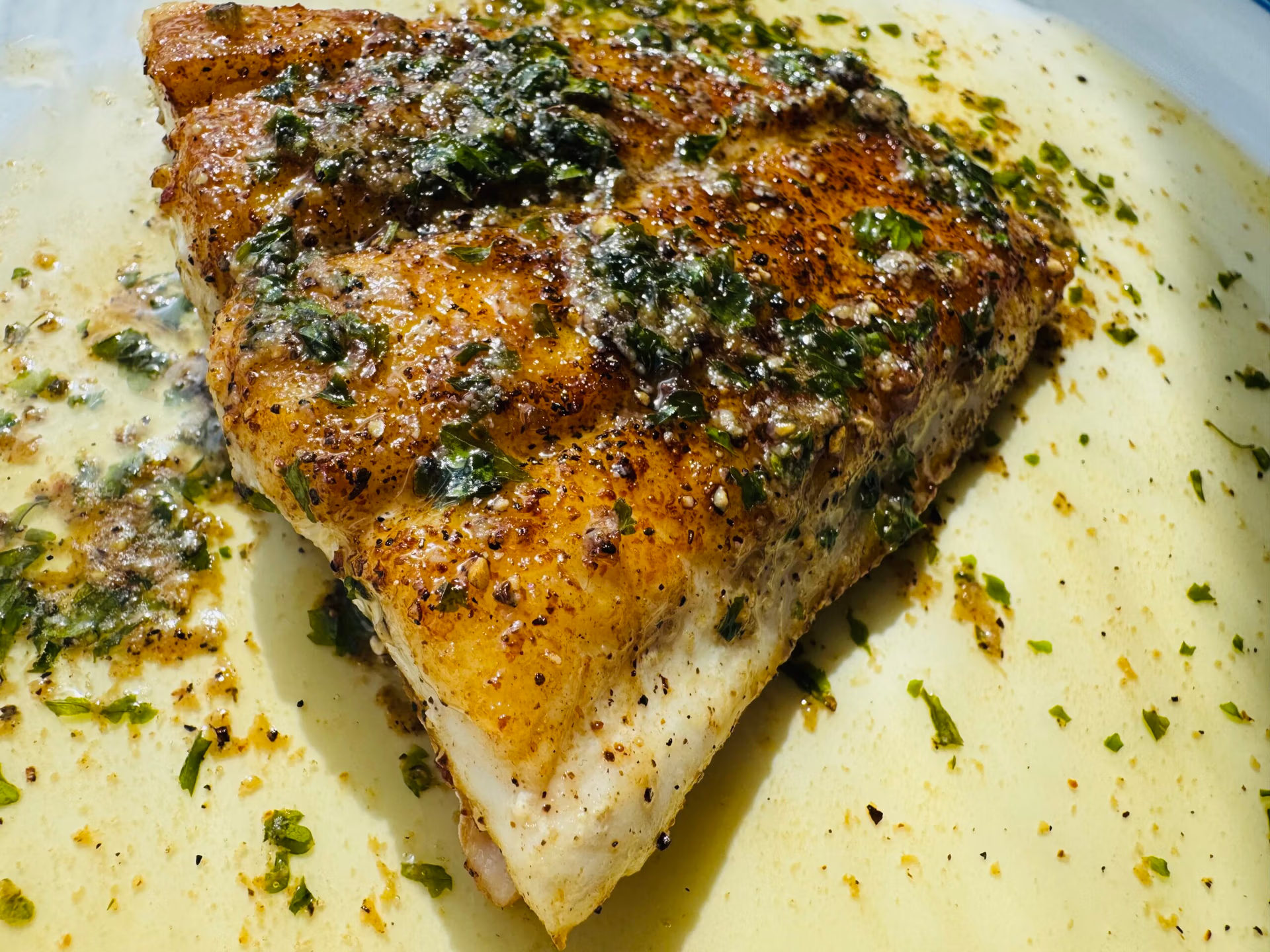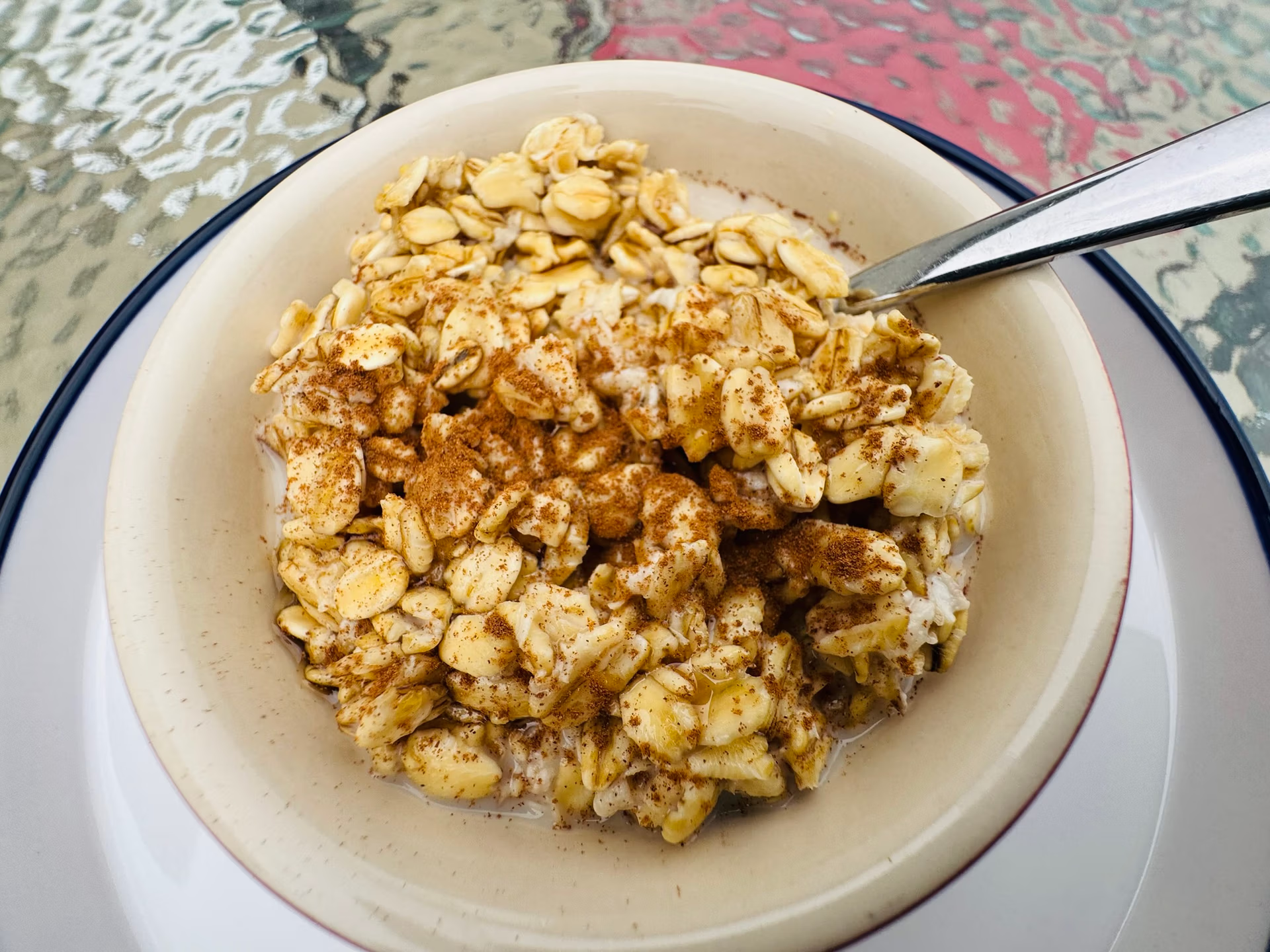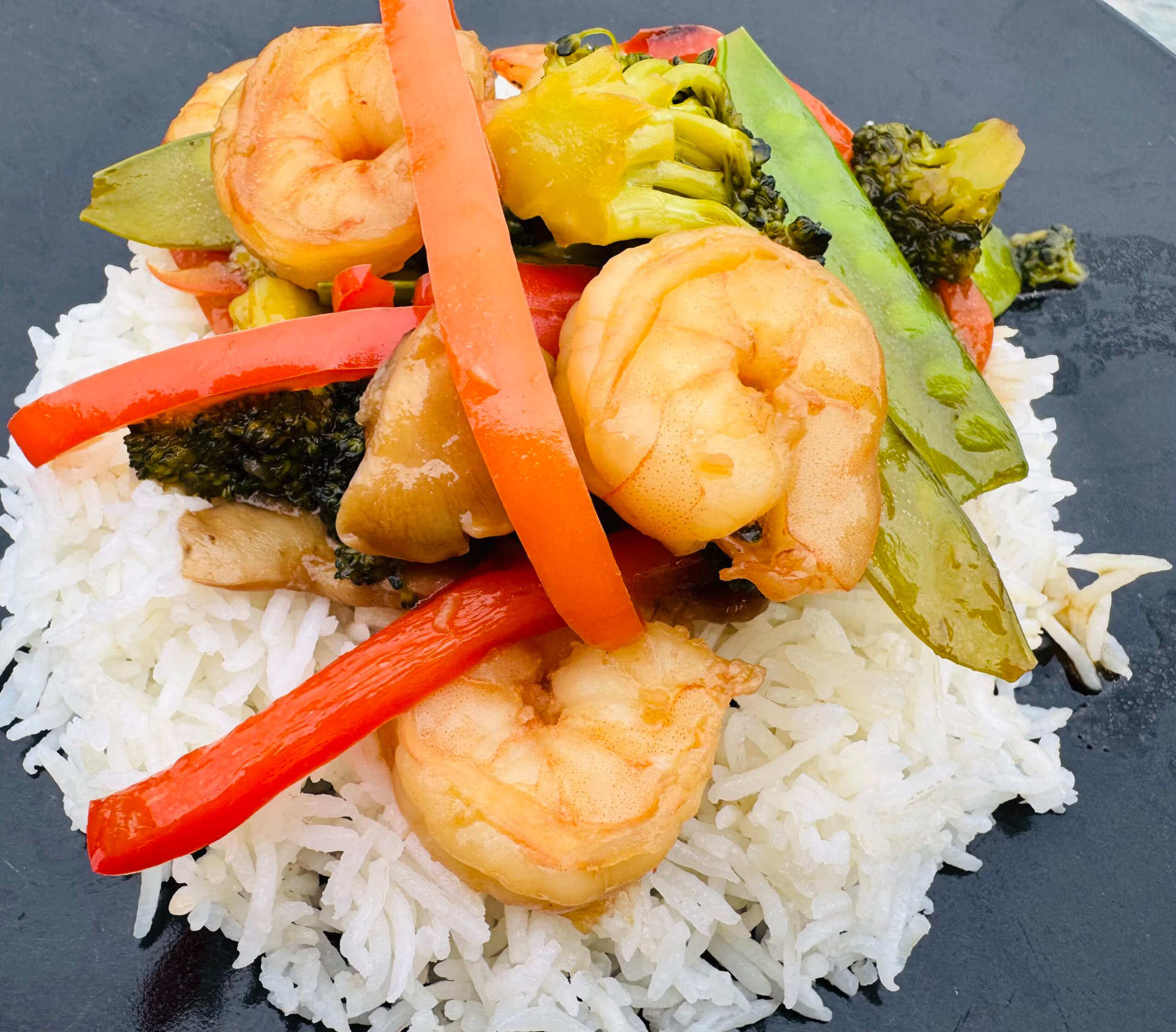
There are certain dishes that just feel sacred. In our family, Jamaican escovitch fish is one of those. I’ve never had an Easter Sunday without it—and I’m creeping into my 40s. It’s always been on our table, right next to bun and cheese, with my mom at the stove, frying fish in her quiet, focused way while gospel music hums in the background.
This year, I finally captured her in action. I got some beautiful photos of her breadin’ and frying the fish in the early morning hours—images that feel like memories already. She’s been making escovitch fish for decades, a tradition passed down from my grandmother, who is no longer with us. My grandmother’s hands could shape a bun and cheese like no other, but that skill didn’t pass to my mom. What did pass down, though, was this escovitch. And honestly? I wouldn’t trade it for anything.
Why Escovitch Fish on Easter?
While escovitch fish is enjoyed year-round in Jamaica, it holds a special place at Easter, particularly on Good Friday, when many families avoid meat. The tangy vinegar, the spicy Scotch bonnet heat, the pickled vegetables—it’s a dish that feels alive, celebratory, and reverent all at once.
Is this an official Jamaican rule? No. But in my house, it’s gospel. Escovitch is Easter.

What Is Jamaican Escovitch Fish?
Jamaican escovitch fish is a dish made by frying whole fish—seasoned and sometimes breaded—until golden and crisp. Then it’s drenched in a hot pickled sauce made with vinegar, onions, carrots, and Scotch bonnet peppers.
That sauce is where the magic lives. It’s poured hot over the fish, allowing the veggies to soften just slightly, while the vinegar and spice seep into every crispy crevice. The result? A bold, beautiful dish that gets even better as it sits.
Is It the Same as Escabeche or Ceviche?
Great question—and I get it all the time.
Escovitch vs. Ceviche:
Nope, not the same. Ceviche is a raw fish dish cured in citrus. It’s bright and refreshing. Escovitch? That’s fried fish, hot oil, hot sauce, and bold flavor. If ceviche whispers, escovitch preaches.
Escovitch vs. Escabeche:
Closer, but still not quite. Jamaican escovitch has roots in the Spanish and Portuguese “escabeche” method of preserving fish in vinegar. But we took that technique and made it ours—less sweet, more heat, and a sauce that tastes like Sunday dinner with your favorite auntie.
What Kind of Fish Works Best for Jamaican Escovitch Fish?
Traditionally, we use sprat —a small, soft-boned fish you can eat whole. But this year, we couldn’t find any. So we used whiting, and it was absolutely perfect. Flaky, mild, and ideal for soaking up the escovitch sauce.
Here are a few fish options if sprat isn’t available:
- Whiting (great flavor and texture)
- Red snapper (firm and beautiful presentation)
- Mackerel (stronger flavor, holds up to the sauce)
- Smelt or herring (for smaller, whole-fish experience)
A Note on Breading (Store-Bought Shortcut Included)
My mom always breads the fish first—it gives it that crunchy crust that stands up beautifully to the hot sauce. But let me tell you, ain’t no shame in using a shortcut.
If you’re short on time or just don’t feel like breading by hand, grab a pack of:
Important tip: If you use a seasoned breading mix, don’t add extra salt to the fish. The escovitch sauce is plenty salty and tangy on its own—it’ll bring all the flavor you need.

How Many Peppers, Though?
The recipe calls for ½ to 1 Scotch bonnet pepper…
But we’re Jamaican, so naturally—we used three. The heat level is completely flexible. You can use fewer peppers, remove the seeds, or swap in habanero or even jalapeño if you’re desperate. But the Scotch bonnet? It’s the flavor that makes it real.
What to Serve With Escovitch Fish
Escovitch is bold, so it pairs beautifully with a mix of textures and flavors:

- Fried plantains – Sweet, golden, and caramelized to perfection
- Fried bammy – Cassava flatbread, soaked and pan-fried for the perfect chew
- Or keep it simple with a kid-friendly Potato Salad
You could also serve it with this Disney Inspired Ratatouille for a colorful veggie side or rice and peas to soak up the sauce.
Storage, Make-Ahead, and Reheating
Escovitch actually tastes better the next day, once the sauce soaks in.
- Make-ahead tip: You can fry the fish the day before, refrigerate, and pour the sauce over just before serving.
- Room temperature: Safe for up to 4 hours (great for outdoor parties).
- Fridge: Store leftovers up to 5 days in an airtight container.
- Freezer: Freeze up to 2 months, though the texture may soften slightly when reheated.
To reheat, skip the microwave. Use a low oven or toaster oven to crisp it back up.
The Heart of the Dish
Escovitch fish is more than a recipe—it’s a memory. A tradition. A way to bring my grandmother’s legacy into the present through my mom’s hands. This Easter, I watched her cook with the same calm purpose I remember from childhood, frying the fish like she always has. I may not have inherited the bun-and-cheese hands, but watching her work reminds me that food is love—and love is what stays.
So whether you’re making this for Easter, for Sunday dinner, or just because you want to taste Jamaica on a plate—this recipe’s for you.
Want More Flavor and Family Vibes?
Inspire the cook (buy me a coffee) so I can keep sharing family recipes, cultural stories, and comforting dishes straight from my kitchen to yours.
And don’t forget to subscribe to the blog for more delicious, soulful recipes each week—plus freebies, cooking tips, and behind-the-scenes kitchen fun.
Love Jamaican Food Recipes? Check out my Introduction to Easy Jamaican Food Recipes
Jamaican Escovitch Fish










